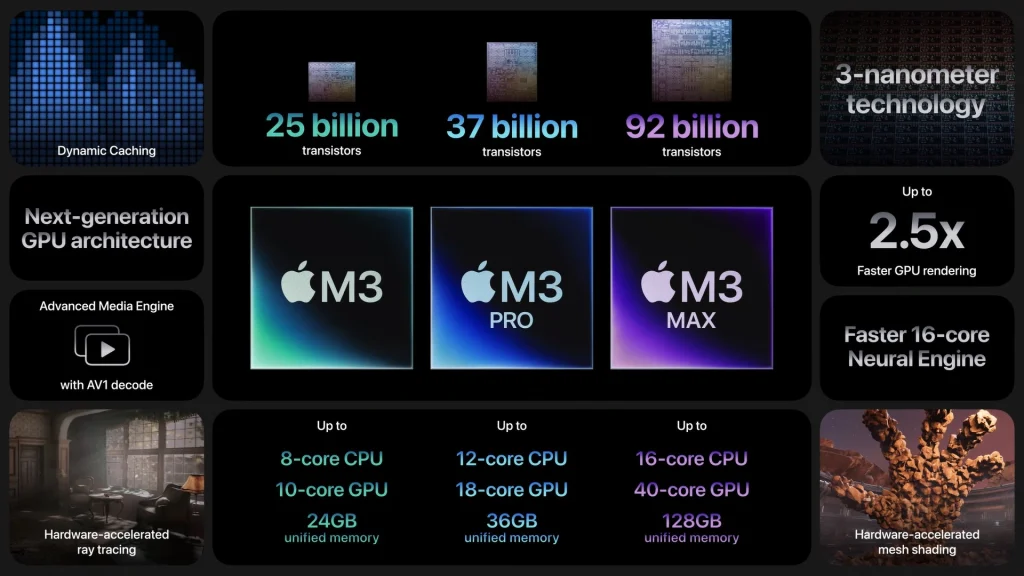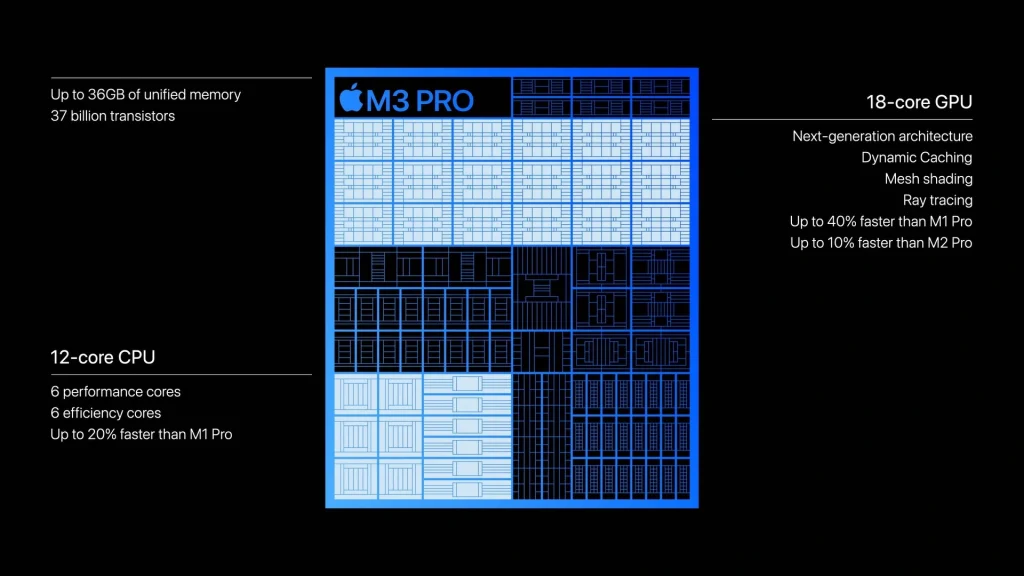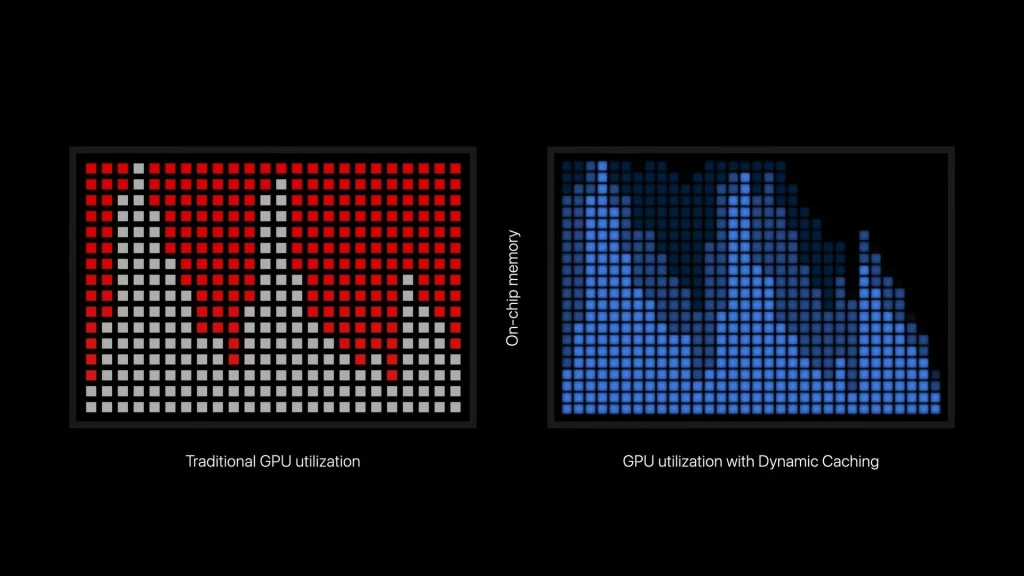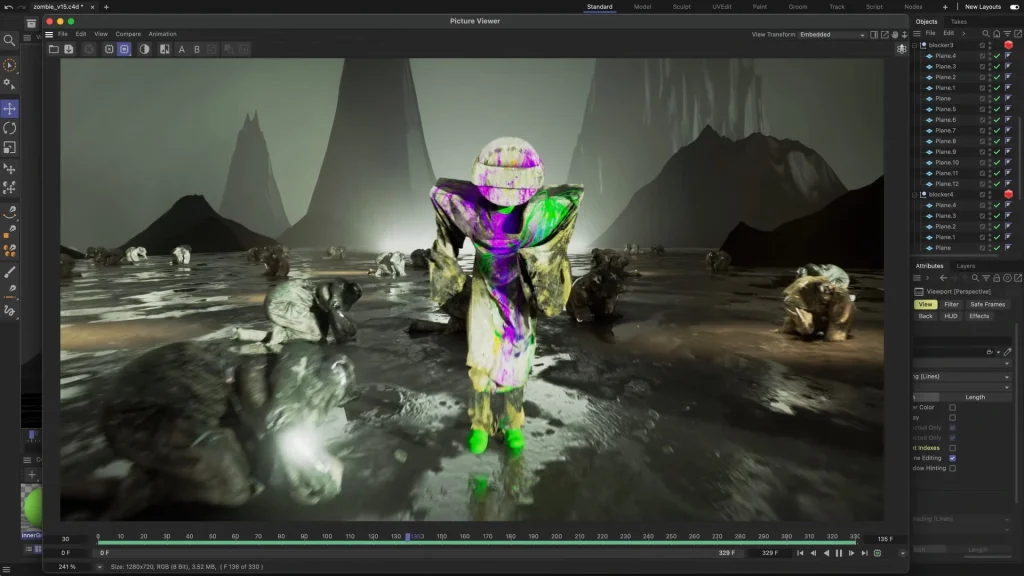In a surprising end-of-the-month event, Apple unveiled its new lineup of Apple Silicon chips – the M3, M3 Pro, and M3 Max. They are set to replace their older counterparts, the M2 family, and as such, they come with a number of improvements. According to the Apple event from yesterday, the new lineup uses the latest 3-nanometer technology and a revolutionary next-gen GPU with dynamic caching, which grants the M3 chips a performance boost of 40 percent compared to their M1 counterparts.
On the surface, it seems that Apple is further polishing their Apple Silicon products, improving both their efficiency and power at the same time. However, when we delved a bit deeper, we noticed some interesting details that may paint a slightly different picture.

A shift in the balance
When we looked closer at the specifications of the three upcoming M3 chips, it became apparent that the improvements might be a bit less impressive in practice. While the use of new the technology grants the M3 family better efficiency, the chips themselves have been downgraded in terms of raw power.
The most significant difference can be seen in the chips’ memory bandwidth. The M3 Pro chip has a memory bandwidth of 150GB/s which is 25 percent less compared to the 200GB/s of bandwidth available for the M2 Pro and M1 Pro chips. Admittedly, the improved efficiency of the M3 should make up for this decrease, but it’s nevertheless an unusual decision.
The next thing that drew our attention is the changed ratio of performance versus efficiency cores in the M3 Pro chip. Its predecessor, the M2 Pro, had 8 performance and 4 efficiency cores, for a total of 12. The M3 Pro also has 12 CPU cores, but only 6 of them are performance cores focused, while the other 6 are efficiency-focused. It’s hard to say how this would affect the real-life performance of the chip, especially considering its overall improvement in efficiency, yet it’s another change of which we aren’t necessarily fans.

Thirdly, the upgrade from M2 Pro to M3 Pro also seems to have lost a GPU core somewhere along the way. The M2 Pro chip features 19 GPU cores, whereas the new M3 model has only 18. Admittedly, not a huge difference, especially considering that Apple promises a much better use of GPU resources with its Dynamic Caching technology, but it’s still another thing that caught our attention.
Gaming on M3 Macs?
Yes, yes, Macs aren’t gaming machines… yet. In recent years, it seems that slowly, but steadily, the idea of Mac gaming has started to sound a bit less absurd and a bit more plausible. The highly-efficient architecture of the Apple Silicon chips is one of the reasons for this and, according to Apple, the M3 family will be even better at handling complex 3d animations and other graphically-demanding tasks.
As mentioned, the M3 GPUs will use a Dynamic Caching technology that will make much better use of the chip’s resources, thus improving its overall performance when running GPU-intensive apps and games.

Additionally, the M3 chips will also have hardware-accelerated mesh shading for improved geometry processing and hardware-accelerated ray-tracing for more realistic reflections and shadows.

All of these new improvements lead us to think that the M3 chip might be even better-suited for running games on a Mac despite the decreased memory bandwidth and fewer performance and GPU cores. However, this is where the main issue with Mac gaming rears its head once more and that is the lack of macOS support for most games. There are many reasons why this problem exists despite the ability of Apple Silicon machines to meet the requirements of even the most demanding modern games.

Unfortunately, until this issue is resolved, and more games start getting ported to macOS, we won’t be able to fully utilized the hardware power and efficiency of the M3 family of chips for gaming purposes. That said, with the rise of cloud gaming and the Game Porting Toolkit as viable alternative methods for gaming on Mac, there’s certainly no shortage of ways to enjoy your favorite titles on an Apple computer. Interested in a particular title to play on your Mac? Just check our other articles, and you’ll most likely find information about the ways you can do that!
Leave a Reply